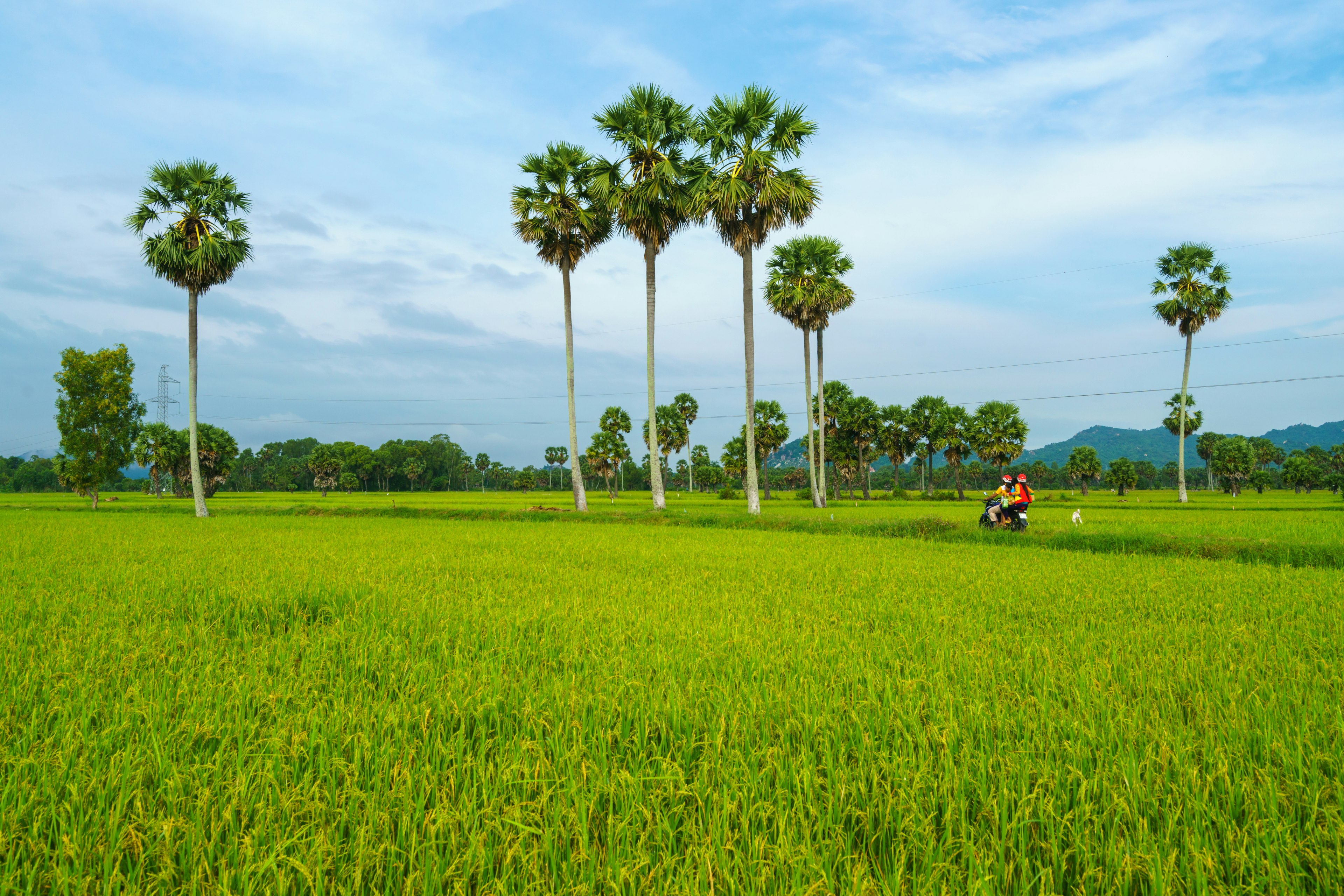Ho Chi Minh City (formerly and still sometimes referred to as Saigon) is one of Vietnam’s most vibrant and culturally rich cities. Although it is characterized by a tropical climate with two main seasons – dry and wet – the city is less susceptible to severe weather conditions than other parts of the country, and potential storms rarely disrupt travel plans.
You can immerse yourself in the city’s cultural heritage, visit historical landmarks, and enjoy street food—regardless of the season. However, timing plays a crucial role in making the most of your trip and ensuring you can enjoy specific activities on your itinerary. Here’s what you should consider when deciding the best time to visit Ho Chi Minh City.
December to April is the best time for perfect weather and day trips
December to April is often considered the best time to visit Ho Chi Minh City since it is prime dry season. During these months, the city experiences lower humidity, mild temperatures (averaging around 28°C/82°F), and minimal rainfall, offering pleasant conditions to explore the sights and enjoy the bustling streets on foot and motorbikes without worrying about sudden downpours and extreme midday heat.
This is also the best time for a trip to the nearby Mekong Delta or Cu Chi Tunnels. The Mekong Delta’s rice fields are often in full growth, offering a picturesque green landscape that is best enjoyed on scenic boat rides, and is ideal for photographers. The area surrounding Cu Chi, which requires walking through some jungle terrain, is much easier to navigate when the ground is dry and firm. Meanwhile, the cooler weather makes it more comfortable to crawl through the narrow underground passageways.

Celebrate Tet (Vietnamese Lunar New Year) in January and February
This is the time when Ho Chi Minh City comes alive during the holiday season with the celebration of Tet, the Vietnamese Lunar New Year. Considered the most important festival in the country, the preparations for Tet start from the last lunar month (which often falls at the end of January).
Every restaurant and coffee shop goes all the way with its creativity to come up with innovative decorative concepts. The facades transform with traditional symbols, like apricot blossoms, firecrackers, red envelopes, and the zodiac animal of the year. Delicious seasonal drinks are added to menus to boost festive spirits and coffee shops serve as cultural hubs during this time.
Visiting parks, popular tourist spots, and pedestrian-only areas, like Tao Dan Park, Bach Dang Wharf Park, and Nguyen Hue Walking Street, is also more delightful and exciting at this time because they are the main venues for the city’s events. Flowers are in full bloom, everyone dons their finest clothes and wears their happiest faces, and no one rushes anywhere. All public places become even more picturesque. Most museums are closed during the first three days of Tet, but the War Remnants Museum and the Independence Palace – two historical highlights of the city – stay open throughout.
Do expect busy traffic before New Year’s Eve when locals head out of town to reunite with their families, a slight increase in service prices, and limited opening hours. Bookings are recommended to ensure decent accommodations at the best rates during this time.

April and September are the best time to visit historical sites
April holds deep historical significance in Vietnam, particularly in Ho Chi Minh City. The Fall of Saigon occurred on April 30, 1975, marking the end of the Vietnam War and the reunification of the country. September is another important month in Vietnam’s history, as the country celebrates National Day on September 2. These dates are commemorated annually with parades, exhibitions, and special events around important historical sites.
There may be a more solemn atmosphere at Ho Chi Minh City’s landmarks during this time, offering you a deeper understanding of local history. Key attractions to visit in April and September are the Independence Palace, War Remnants Museum, Ho Chi Minh City Museum, and French-era buildings, like the Opera House and the Central Post Office.

May to November is the best time for budget travelers
May to November marks the rainy season in Ho Chi Minh City. A drop in tourist numbers leads to significant discounts on accommodations, flights and tours. Street vendors and market sellers may be more open to negotiation, giving budget-conscious travelers a better chance of getting great deals on food, souvenirs and local experiences too.
While the wet season brings frequent rains, they are usually short-lived, often occurring in the late afternoon or early evening. The downpours provide a refreshing break from the heat and bring a clean atmosphere, allowing visitors to continue their plans without major disruptions. You can always take advantage of this weather to explore indoor attractions like museums and art galleries, relax at a spa, or duck into a cozy cafe and watch the city from behind the curtain of rain.

August and September are the best times to explore Cholon (Chinatown) and religious sites
During August and September, Cholon (mainly centered around District 5) and its main attractions – Thien Hau Pagoda and Binh Tay Market – and Buddhist temples across the city become particularly atmospheric with a series of ritual practices celebrated by its people.
Many long-standing rituals are assembled for the Hungry Ghost Festival on the 14th and 15th of the seventh lunar month, including preparing ritualistic food offerings, burning joss paper, and paper-mache items, such as clothes, houses, and other material goods, for the visiting ghosts. Mid-Autumn Festival takes place the following month. A must-do when visiting Ho Chi Minh City during this time is to wander Luong Nhu Hoc St that transforms into Lantern St with an exciting display of traditional lanterns, lion dances and street performances.
